Topics
Restomod approaches
Beginning around 2012 a handful of innovative pioneers addressed the Jaguar saloon from a restomod perspective using three project approaches:
- Re-engineer the saloon from the ground up while retaining as much of the original Jaguar DNA as possible like the straight six Jaguar engine with its carburetor configuration
- Transplant a modern supercharged Jaguar like the XJR (circa 2000-03) into the vintage saloon body shell
- Retrofit a saloon using best-in-class aftermarket offerings including non-Jaguar components like a General Motors V8 engine and automatic transmission
Here is a brief summary of what’s been accomplished over the past five years.
Re-engineer
Ian Callum [U.K.]
In 2013 Jaguar design director Ian Callum began a complete re-thinking of the classic Mk2 that eventually resulted in a stunning, if extremely expensive (around $600,000), re-creation of the original produced by Classic Motor Cars.
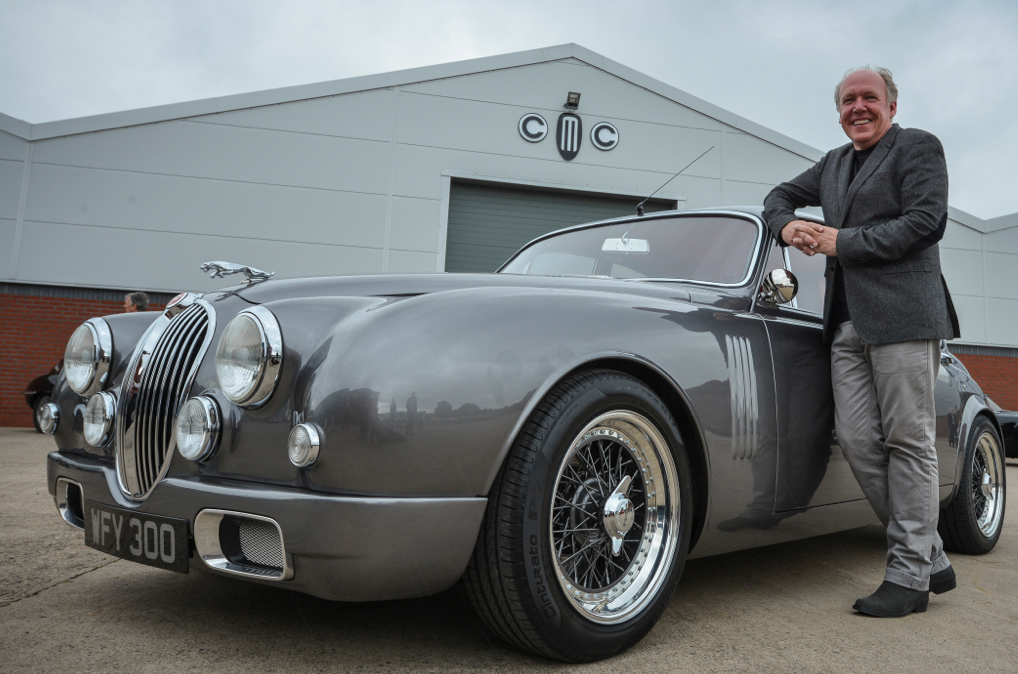
Ian Callum poses with his recreation of the Mk2
While Callum’s re-creation of the Mk2 is impressive from a styling perspective, performance seems under par considering the enormous cost. At 260 HP and a curb weight of 3,350 pounds, the weight-to-power ratio is only 12.9, about the same as a non-luxury sedan like the Toyota Camry XSE V6 and well below luxury sedans like the Infinity G37 (11.1) or Hyundai Genesis (10.8).
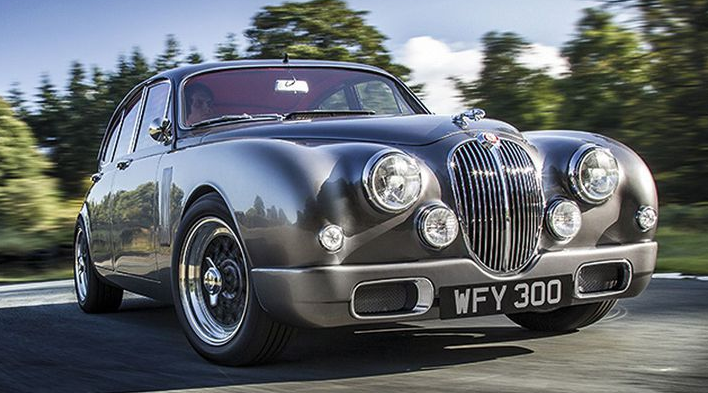
The Callum restomod Mk2, in limited production at $600,000, reflects the expensive re-engineering approach
Body changes
To accommodate pressurized fuel, the gas filler is now on the upper right rear near the backlight, front louvers reduce engine heat, rear louvers aid cabin air flow, the front running lights and markers were eliminated, wheel openings enlarged, bumpers and door handles “modernized”, roof radio aerial, and the overall body dimensions are slightly shortened and widened versus the 4591mm length by 1695mm width of the original Mk2.

Front cabin
Modifications include filling in the radio center console panel, steering wheel switch, instrument revisions, fold-out screen for navigation and entertainment, changed seat upholstery design, and a revised veneer wood profile (no longer burl walnut).
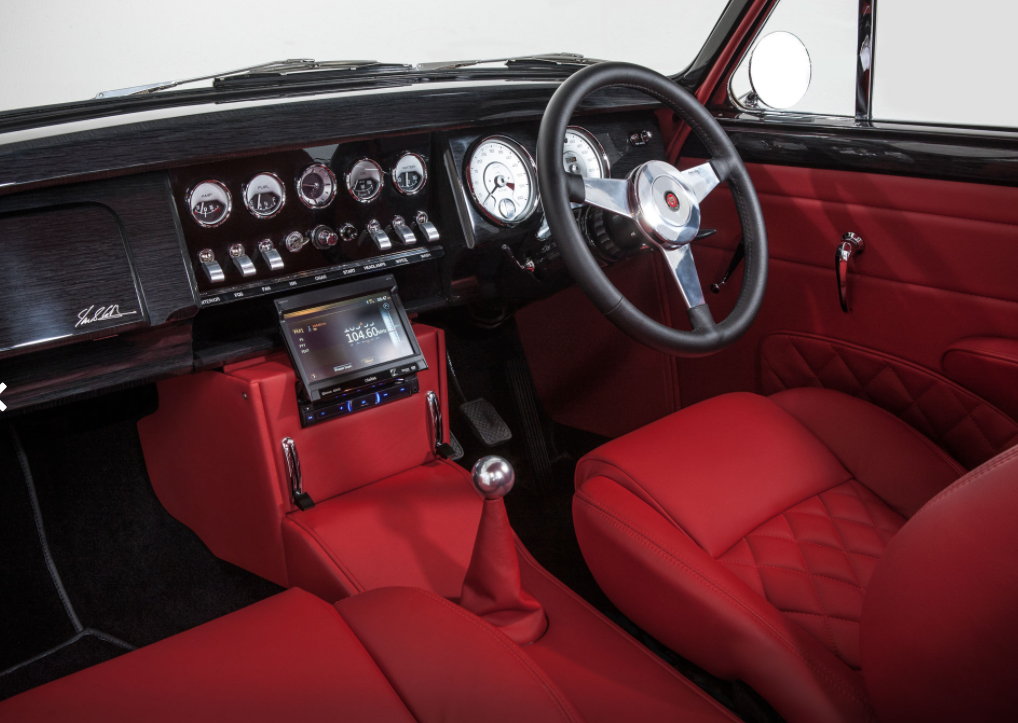
Callum cabin with modified center console and dash
Rear seat
Added headrests and revised center section with redesigned upholstery pattern. Headliner modification can be seen to accommodate the sunroof.
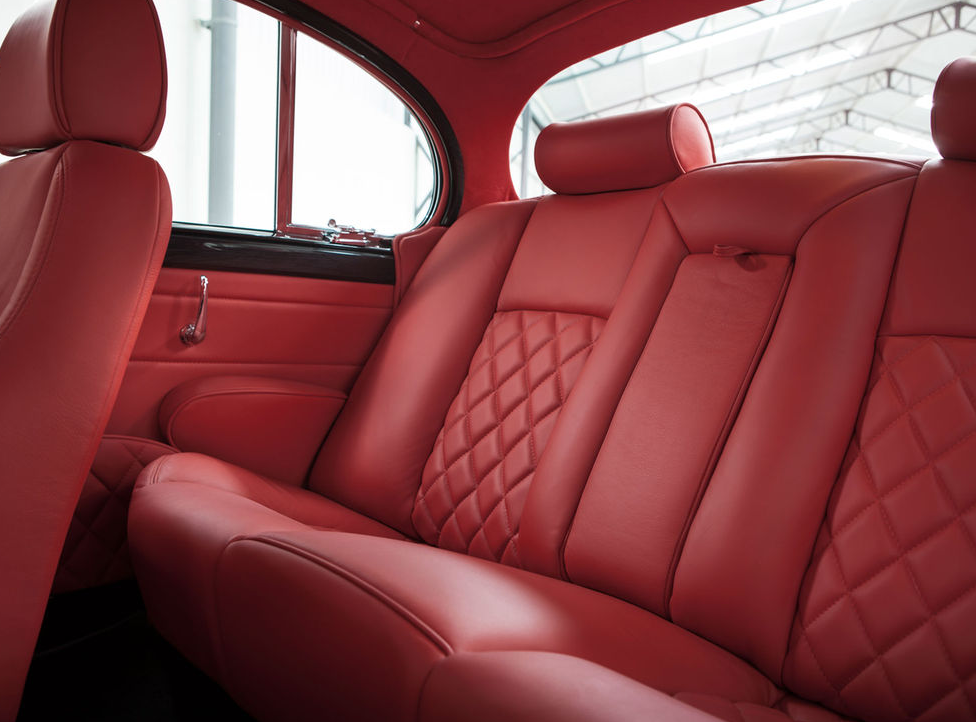
Redesigned rear seat with head rests and center section
Specifications
-
ENGINE AND TRANSMISSION
- Jaguar inline six cylinder 4.3 XK, 260 HP, 280 lbs/ft torque @ 5000 RPM
- repositioned in chassis to improve lubrication, cooling and fuel handling
- fuel system, twin SU HD8 2-inch carburetors with ram air induction
- aluminium radiator with built-in oil heat exchanger and electric cooling fan
- 5-speed manual transmission
- modified exhaust
- bespoke twin bore stainless steel system steering, optimized geometry
- powered CMC rack & pinion
- designed by CMC, 20 imperial gallons, unleaded 97 octane
- Le Mans style quick release fuel cap
- designed and reengineered by CMC
- uprated coil springs, roll bar and wishbone bushes
- adjustable dampers
- solid subframe mountings
- subframe repositioned to improve anti-dive characteristics
- designed and reengineered by CMC
- uprated coil springs
- blade control wishbones
- outboard disc brakes
- anti-roll bar
- adjustable dampers
- front discs vented 320mm diameter with fully floating single pot caliper
- rear discs solid 280mm diameter with fully floating single pot caliper
- integral handbrake mechanism, cable operated
- Torrino split rim 17” diameter wire wheels with polished aluminium rim
- hub and spokes body color
- front wheels 6.5” wide fitted with 205/55/17 tires
- rear wheels 7.5” wide fitted with 225/50/17 tires
- Jaguar wheel spinners
- front and rear bumpers replaced
- front wings widened with wing louvres to extract engine compartment hot air
- rear wheel spats made in aluminum and reshaped to design
- left rear wing with vented panel to extract air from the passenger compartment
- external body line chrome mouldings removed
- re-sculptured exterior door handles
- front quarter lights altered and closed
- front wing sidelight pods removed, with sidelights incorporated into headlights
- external mirrors fitted to both front doors
- plastic inner wing shields fitted to front wings
- boot badge designed by Callum
- programmed electronic ignition system
- automatic choke
- 90 amp alternator
- high torque starter motor
- central locking with remote operation on all doors
- uprated wiper motor with interval delay
- heated front and rear windscreens
- quartz halogen headlights
- daylight running lights
- redesigned front and rear seats, trimmed in the finest Scottish leather
- alcatara headlining
- sun visors in leather
- door casings in leather incorporating Callum styling modifications
- interior wood in dark oak with piano black edging
- Ian Callum signature etched into the glove box
- instrument faces redesigned by Callum with bespoke badge in rev-counter face
- redesigned toggle switch levers
- original centre console modified for modern audio and satellite navigation
- inertia reel seat belts to front and rear seats
- modified rear view mirror
- Wilton carpet
- modern heat and sound insulation fitted to the floors and bulkheads
- electric time clock mounted in centre instrument panels
- stainless steel tread plates to all door apertures front plates with Callum logo
- modified heating and ventilation system for enhanced climate control
- Clarion NZ502E single DIN multimedia station 16cm flip-out touch screen
- built-in multi-lingual navigation, audio and DVD Bluetooth
- iPhone and iPod connectivity
- touch screen discreetly retracts when not in use
- Clarion rear view digital camera
- reversing vision displayed on touch screen
- Clarion component loudspeakers, 6 speakers, front and rear-mounted, 350 watts output, in specially-designed housings
- classic roof mounted aerial
- Van Damme Blue Series Studio Grade speaker cable
- finely stranded ultra pure oxygen-free copper .5mm2 conductors
FUEL TANK
FRONT INDEPENDENT SUSPENSION
REAR INDEPENDENT SUSPENSION
BRAKING SYSTEM, HYDRAULIC SERVO ASSISTED
WHEELS AND TIRES
BODY MONOCOQUE CONSTRUCTION
IGNITION AND ELECTRICAL
INTERIOR
IN-CAR ENTERTAINMENT
Jaguar Classic [U.K.]
Unveiled at the 2018 Geneva Motor Show, the heritage division of Jaguar upgraded a Series 3 XJ6 for rock drummer Nicko McBrain of Iron Maiden. The carbureted 4.2 engine remains and most of the innovation has an appearance focus, like body flares to accommodate oversize wire wheels, custom bumpers (the original Series 3 ones are unattractive), bespoke door handles, wing mirrors, and a re-configured dash.
Transplant
Greg Beacham [New Zealand]
Restorer Beacham was one of the first to transform a Mk2 using the innards of the Jaguar XJR (he has taken the same approach with the E-Type) and sells them for around $210,000. The interior is expertly modified for the XJR center console.

Beacham Mk2 interior with XJR console

Beacham front interior
The 3rd generation Beacham Mk2 uses the 2010 onwards XJ (x351 platform) 5.0 AJ-V8 GEN III engine, suspension, electronics, front seats, air conditioning and other XJ functions. Beacham purchases Mk1 and Mk2 bodies from the U.S., imports them back to New Zealand, and them exports finished restomods back to the U.S. with original year Mark I/II manufacturing dates for licensing/registration purposes.
Upgrades include:
- ABS
- AP brake calipers with vented discs
- adjustable shocks
- power-assisted steering
- air conditioning/heat climate control
- 16-inch chrome wire wheels
- electric heated seats
- electric windows and mirrors
- heated rear screen
- head restraints on all seats
- stainless steel dual exhaust
- louvered bonnet
- walnut veneer dash and trim
- remote door locking with alarm
- entertainment system with stereo sound
- bluetooth and tracker system
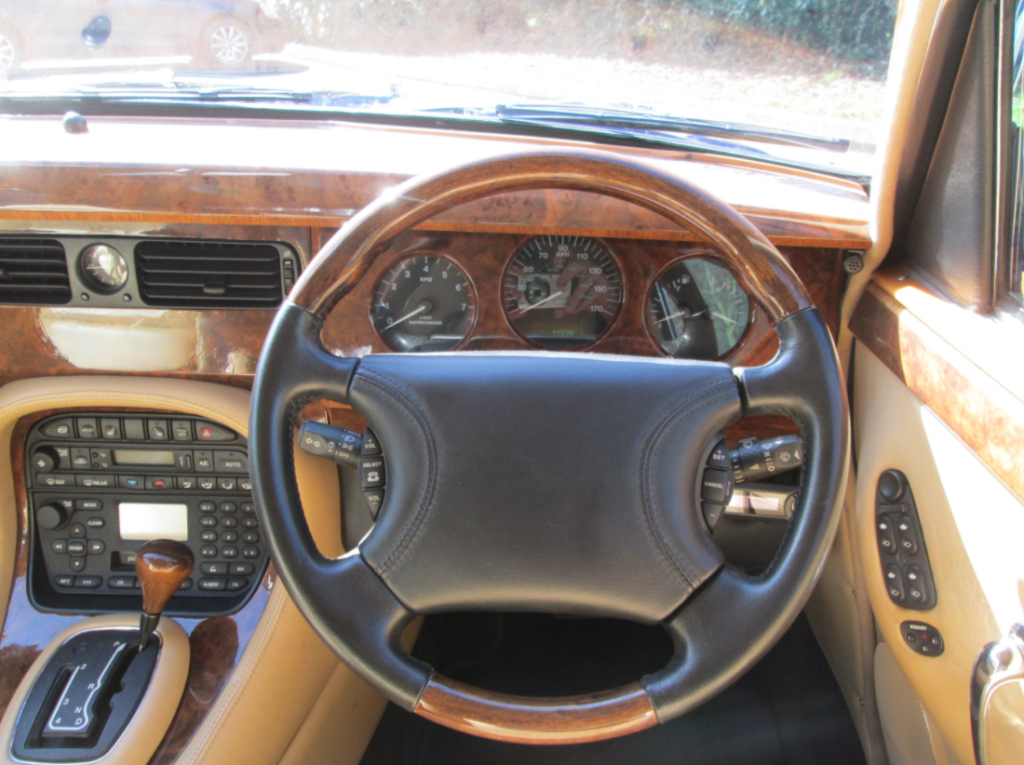
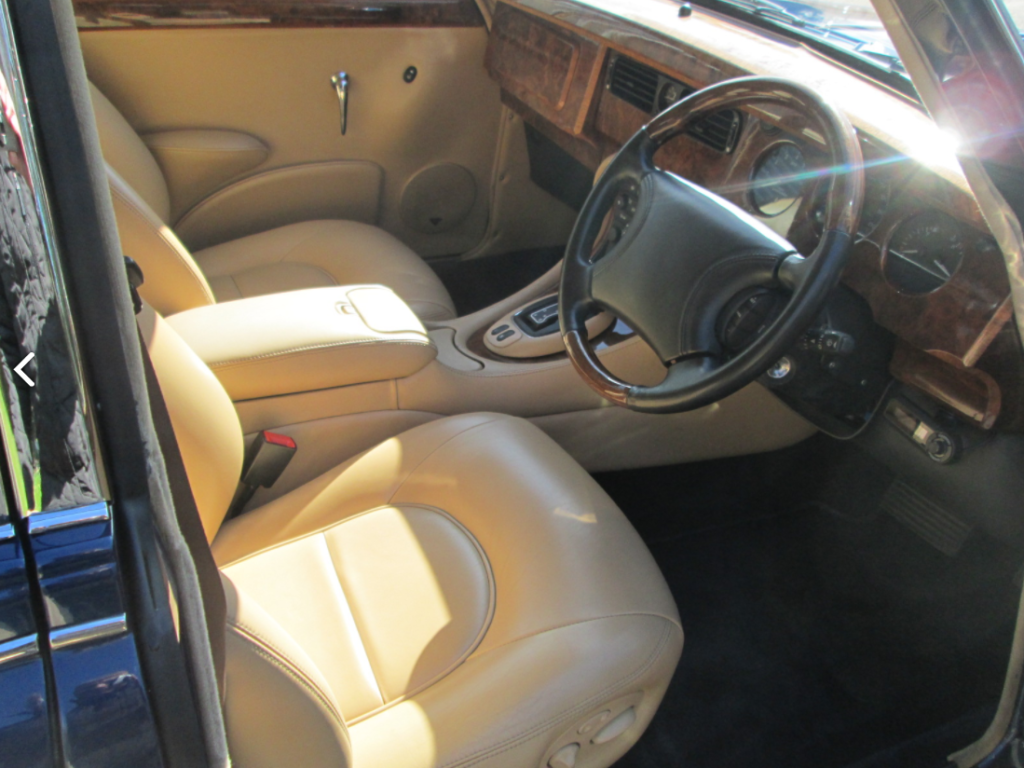
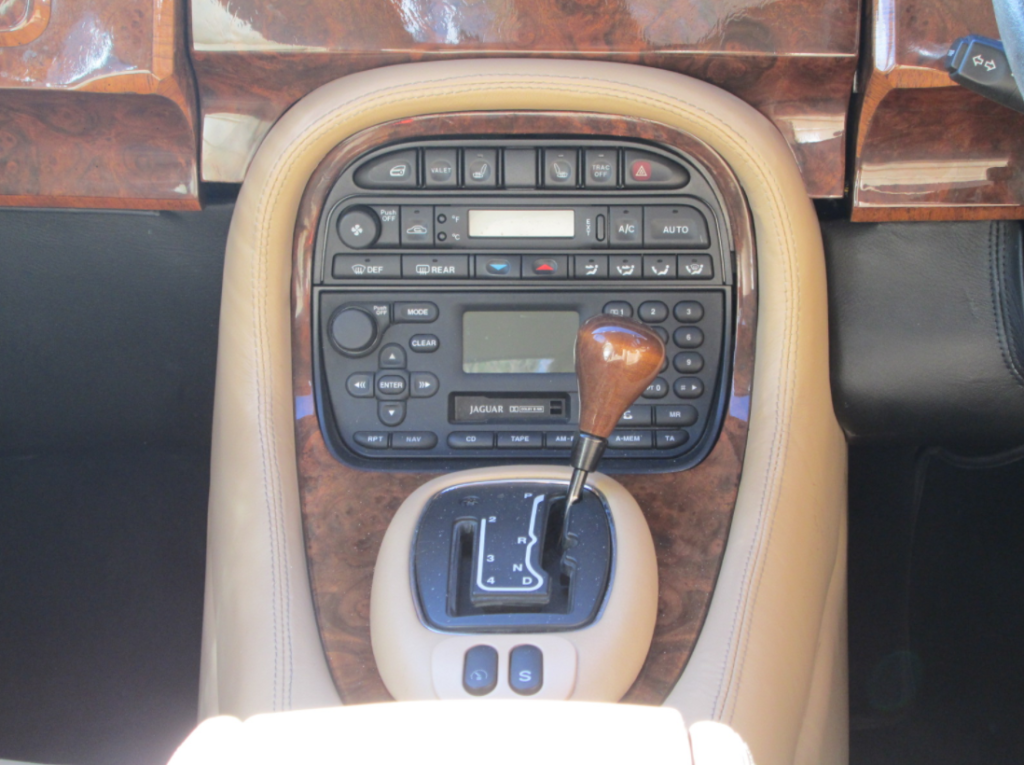
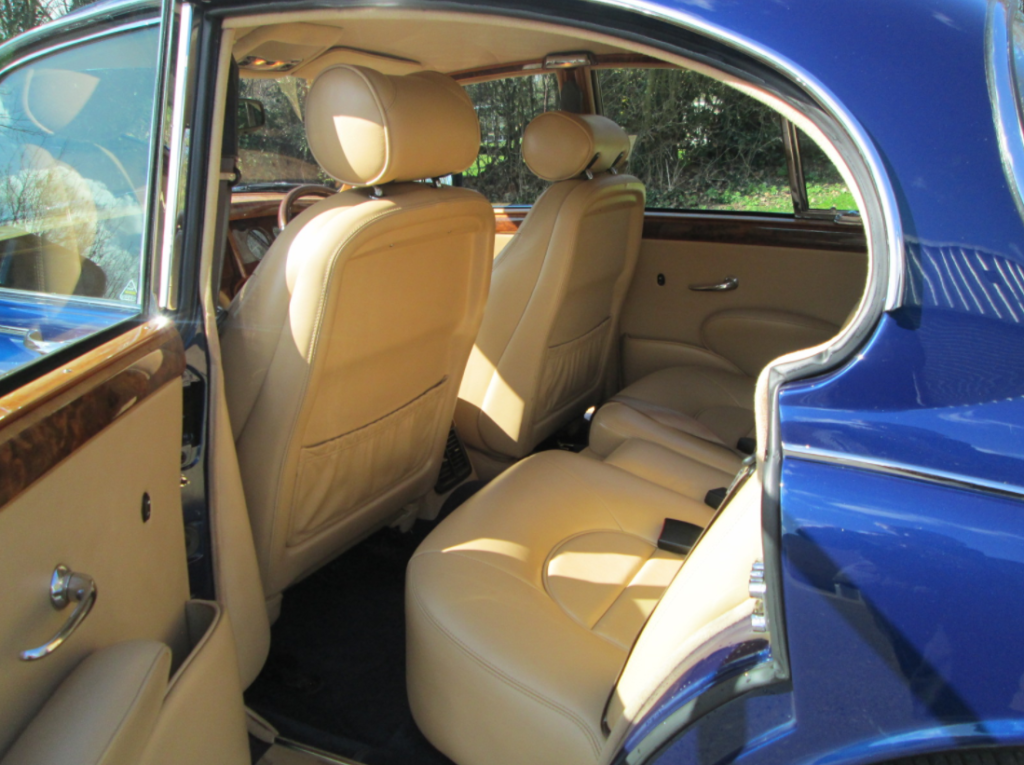
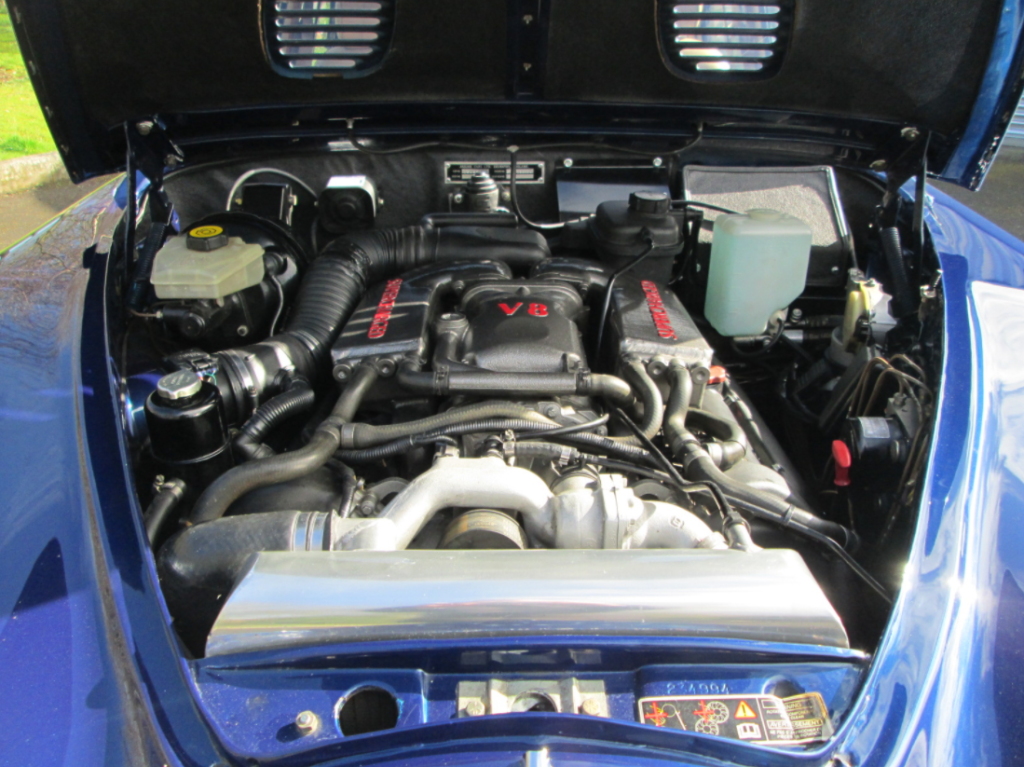
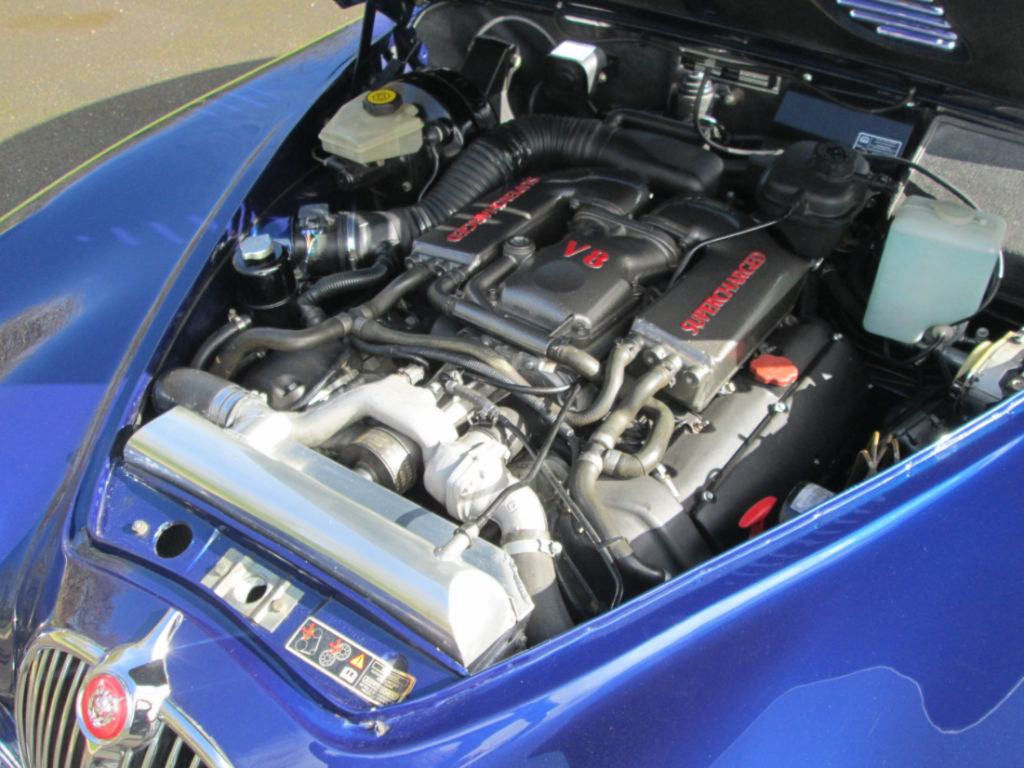
Doug Dooren [Connecticut]
Doug Dooren also elected to merge a donor XJR (1997-2003) like Beacham with the Mk2. His stunning car incorporates nearly everything from the modern XJR including:
- 4.0 V8 AJ supercharged Jaguar engine (375HP)
- sun roof
- modern climate control and electronics
- electric windows and locks
- significantly modified interior
This car was near completion in October 2017.

Dooren’s XJR supercharged V8 engine crammed into the Mk2 bay
Design issues
Wheel well space
The XJR wheel track is wider than the Mk2: 4.1″ in the front and 5.7″ in the rear. This requires modification of the front stub axle carrier/front A-arms and the rear IRS setup including the rear stub axles. In addition, flaring of the front wing and wheel fender may be necessary. In the rear, the spats will be eliminated and replaced by a widened and flared fender edge to accommodate 17″ tires.
Sunroof
The XJR sunroof can be mounted on the existing Mk2 roof contour but not without a significant modification of the interior headliner. The vintage cant headliner would be replaced with a motorized unit that has an impact on the A and B posts due to drainage tubing as well as on the wood trim above the door openings. Callum did not include a sunroof in his Mk2 re-design.
Side mirrors
The XJR side mirrors clearly conflict with the 1960s vintage exterior of the Mk2. Callum elected to use traditional chrome mirrors, while Beacham mounted modern ones.
The side mirrors are complicated with a number of functions that tie back into other XJR systems. The door mirrors are cheater mounted, color-keyed units, remote electrically adjustable and heated. Adjustment of both mirrors is carried out from the driver’s door switch-pack. A slider switch selects the mirror to be adjusted, and a disc switch adjusts the selected mirror to the required position. Mirror adjustment can only be made when the ignition switch is in position I or II or the driver’s door is open, and the selector switch is moved from the central position. The door mirrors also automatically darken under control of the electrochromic interior rear view mirror. Mirror heating elements operate on selection of backlight heating.
Automatic dipping of passenger door mirror for curb view when reversing, is fitted as part of the memory pack. With the ignition switch in position II, the mirror selector switch in the left or right position and reverse gear selected, automatic dipping is initiated by moving the mirror toggle switch rearwards and releasing. On receipt of the dip signal, the passenger door mirror is driven downwards either 7 degrees, bottom of travel, or 4.5 to 5.5 seconds, whichever occurs first. Subsequent rearward movement of the toggle switch achieves further dipping of the mirror in the same increments and sequence. The mirror can be manually returned to the normal memorized position by moving the toggle switch forward with reverse gear selected. The mirror will automatically return to memorized position on deselection of reverse gear, or moving ignition switch from position II.
Door mirror fold-back where fitted, to facilitate parking in confined spaces, can be initiated when the ignition switch is in position I or II, the mirror selector switch is in the central position and vehicle speed is below 19 km/h (12 mph). Mirror fold-back is then initiated by moving the toggle switch rearwards and releasing it. The door mirrors are returned to the normal driving position by again moving toggle switch rearwards. There is no speed constraint on this operation. In the event of a fold-back mirror becoming ‘out of position’ due to accidental impact, it must only be re-positioned by initiating the fold-back sequence.
Including the modern mirrors would require modification of the front door quarter window frame and glass since the vertical chrome hinge blocks the mirror view. In addition, mirror controls would be required on the driver door upholstery panel.
Retrofit
Lasky Coachworks [California]
Marc Lasky began with a 1975 XJ coupe that was stripped down to its frame. A Chevy LS1 engine, transmission and air conditioning system from a 40,000-mile Trans Am donor car replaced the Jaguar innards. The interior was redone in black and the exterior painted in Porsche Lapis Blue. Lasky also used the IRS from a wrecked 1995 Jaguar XJS to take advantage of both the limited slip differential and the “outboard” brakes (the re-located rotors are more accessible and less destructive to oil seals).
This outstanding restomod was auctioned on BringATrailer.com for $103,000 in June 2017 — probably a record amount for any of the early XJ models and strong evidence that the restomod concept has significant collector appeal. Perhaps the era of the concours mantra “all original Jaguar parts” is fading.
FiBoy [Jyri Järvenkylä, Finland]
A Jaguar enthusiast in Finland (his company is Fib Oy, Ltd) customized a 1957 Mk1 2.4 as well as a 1975 XJ12C Coupe. The Mk1 was transformed using numerous aftermarket components, including:
- AJ6 3.6 engine with catalytic converters, cold air inlet, Kenlowe fan, block heater
- ZF-automatic gearbox
- stainless steel exhaust
- narrowed XJ 40 IRS with ride height control
- ABS brakes
- rear springs SNG Barrats JLM11698 NSL Rear suspension conversion kit
- XJ12 Series III front brakes
- modified Mk10 springs with Spax shocks
- air conditioning with two fresh air inlets
- heated backlight
- XJ40 electric heated front seats in MK1 style
- electric windows
- XJ40 Sunroof
- central door locking, theft immobilizer
- six speakers with 12″ subwoofer sound system, CD changer in boot
- 205/15-70 tires on 15″ bolt-on MWS wire wheels
- stiffened and widened rear body, paint Jaguar Titanium color
- modified 420 style cockpit

FiBoy modified 420 dash with XJ40 J-gate transmission shifter configuration.
Fiboy’s rebuild of the XJ12C coupe included a swapped 6-liter Jaguar engine that replaced the original 5.3L, a 4L80-E automatic transmission from an 1995 XJS, custom wheel louvers, refashioned dash, a transplanted XJ40 sunroof replacement for the original vinyl roof, and a redesigned interior.
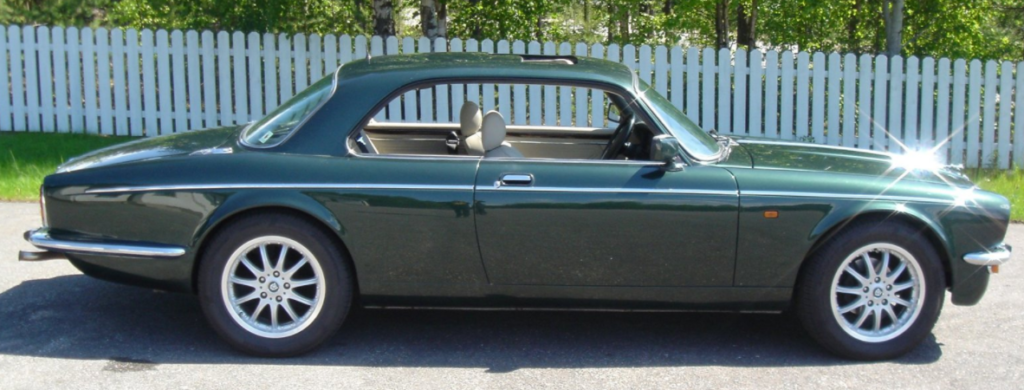
Fiboy’s 1975 XJ12C custom rebuild
Alan Primaz [California]
In 2014 a Jaguar 3.8 S-Type, first cousin of the Mk2, was retrofitted with a powerful General Motors LS1 engine (450HP) and a number of other modifications including:
- custom stainless exhaust
- suspension with adjustable coil-over dampers
- Wilwood disc brakes with vented rotors
- custom offset 17×8.5 rims with 245 tires
- power steering
- Retroair air conditioning
- Custom Wizard aluminum radiator
- HID headlights
View YouTube video of Primaz’s running Chevy LS1 V8 in the S-type engine bay.

Primaz interior retains more of the original look
The approach taken by Alan Primaz is similar to many American car restomods that install a modern engine along with hand-picked aftermarket enhancements from different vendors in the manner of hot rod builders.
The interior seats and center console are adapted from a Jaguar Vanden Plas, a 1998-2003 special edition of the XJ8.
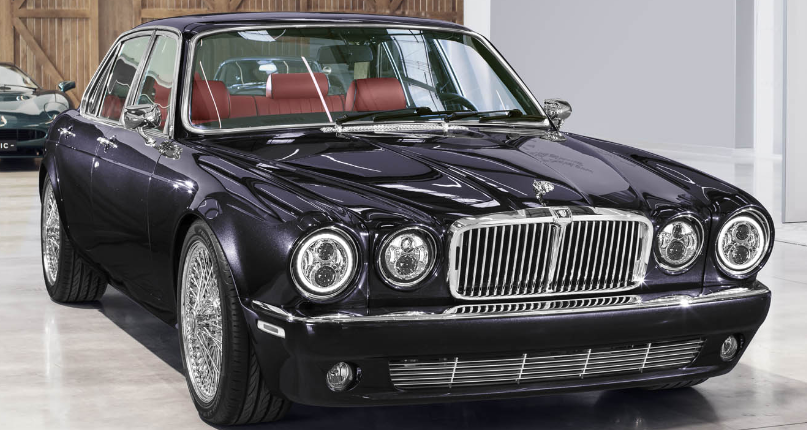




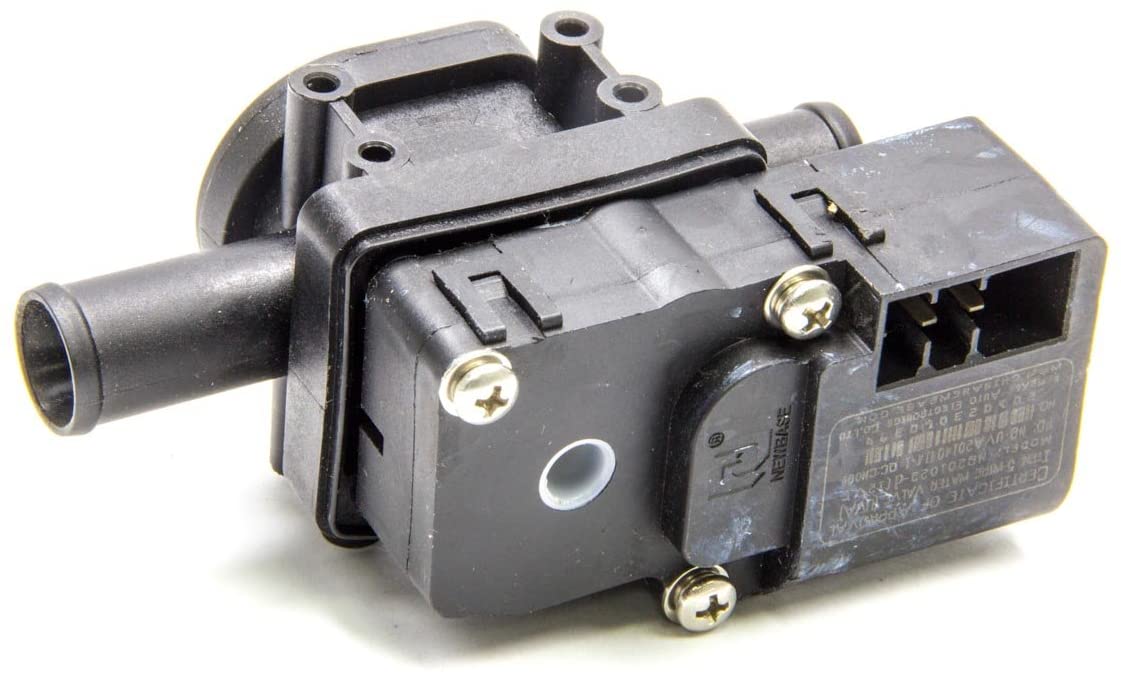
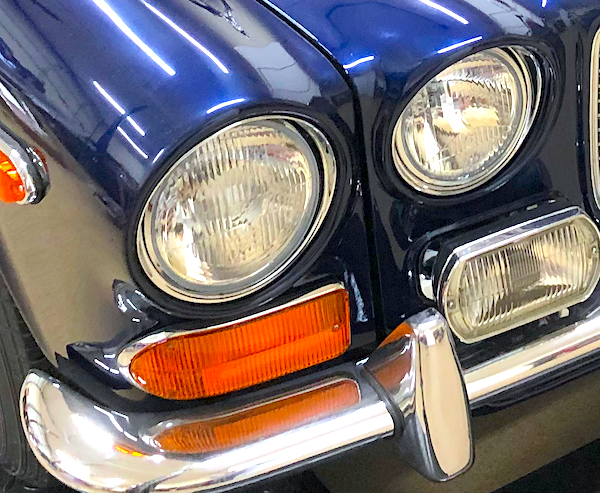


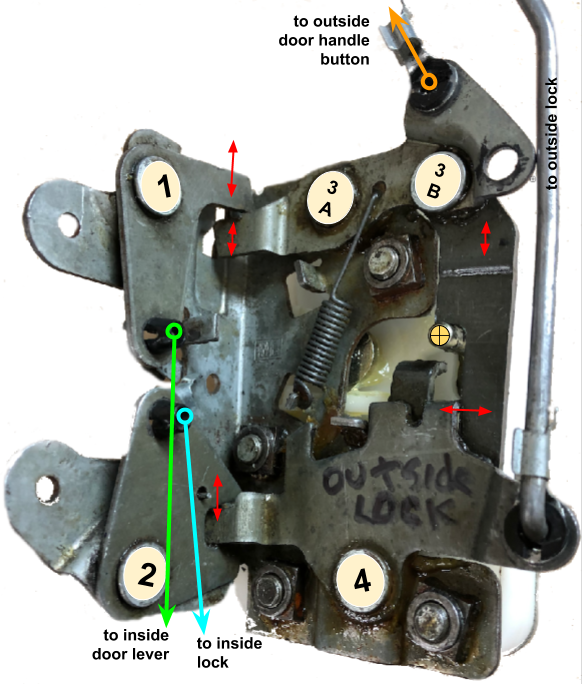
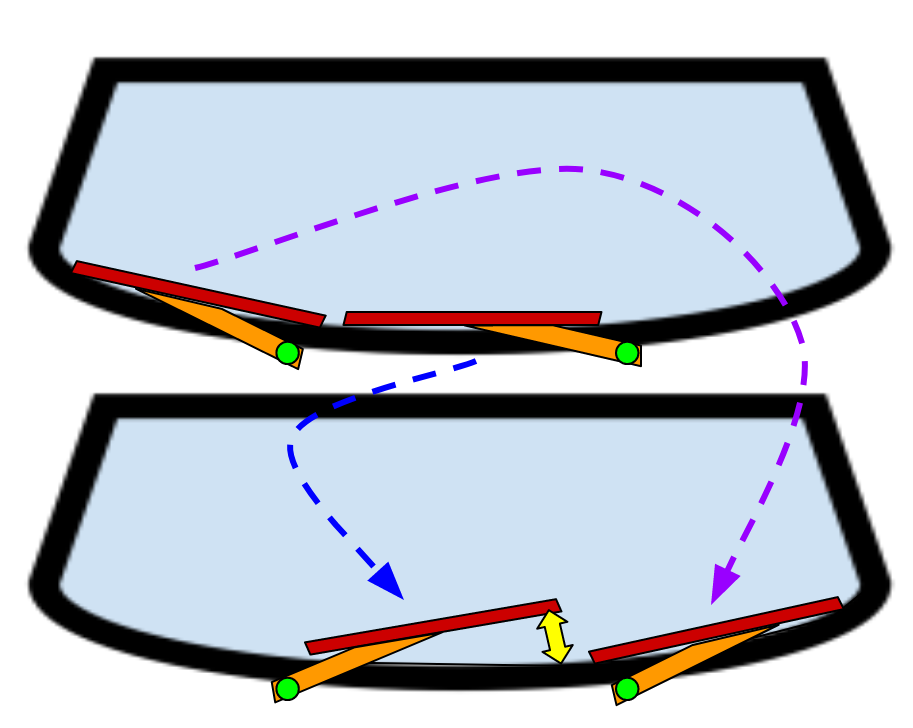

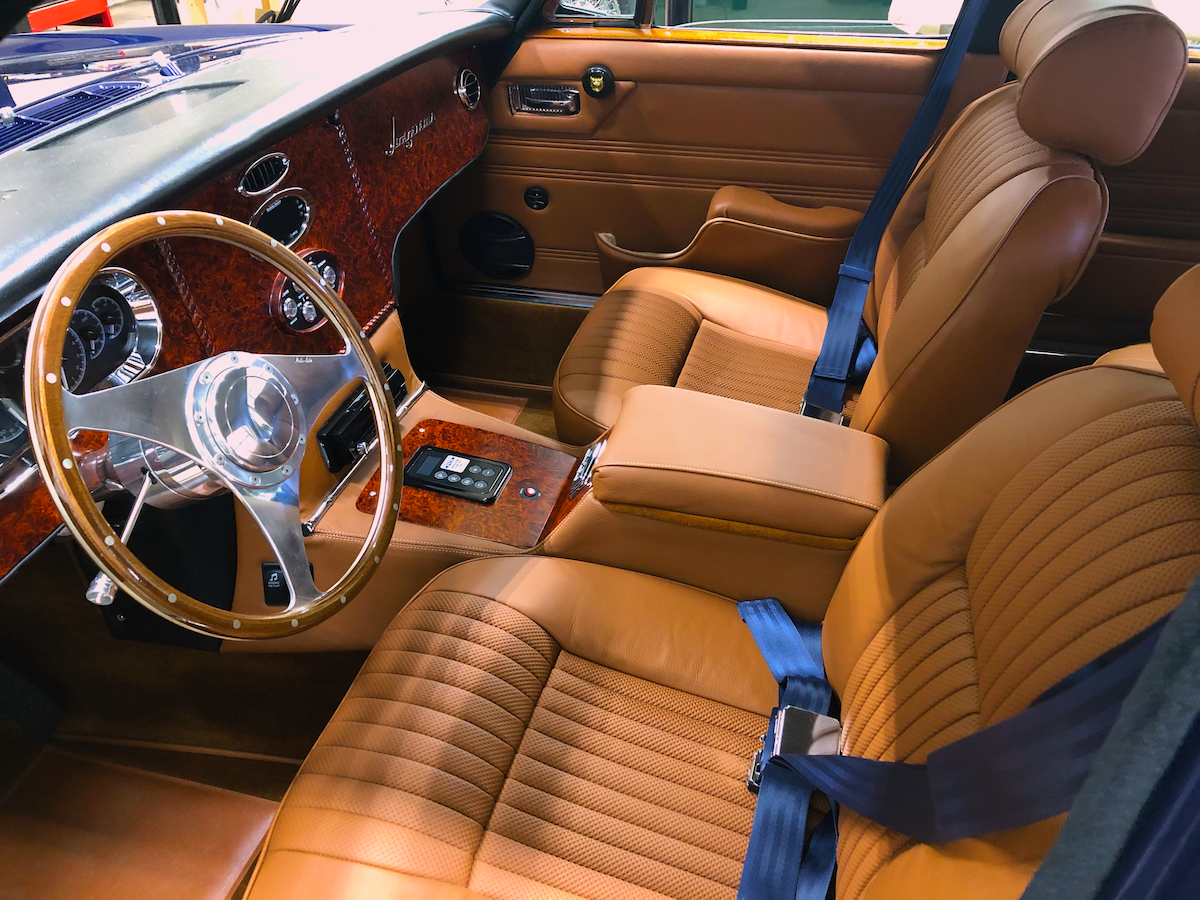
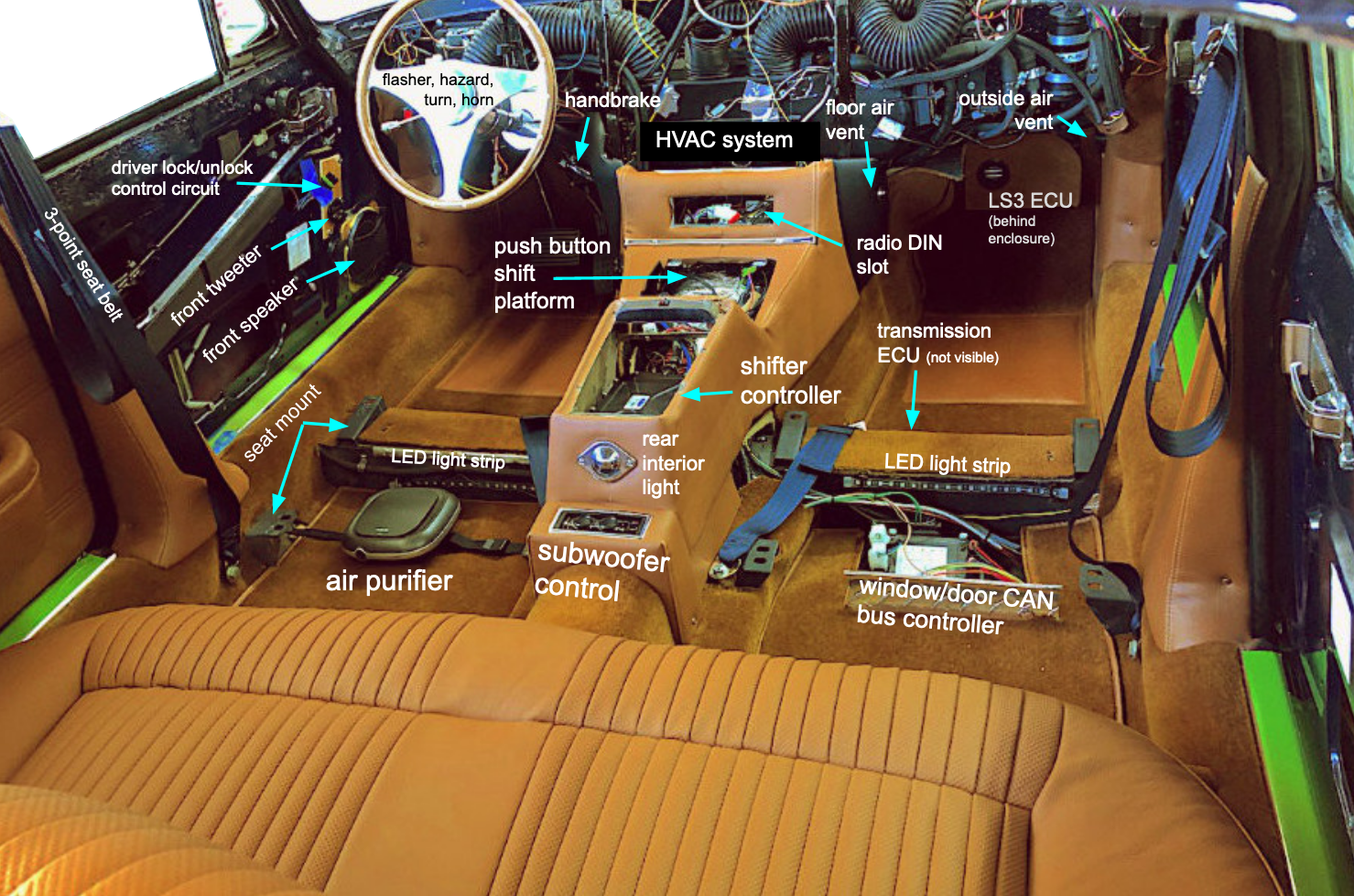
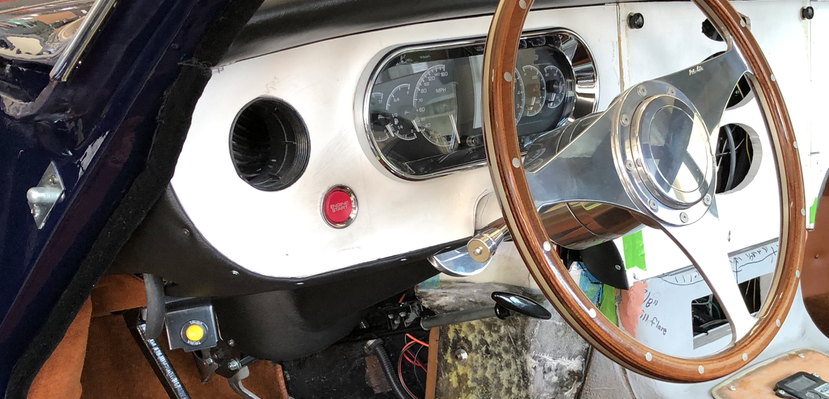
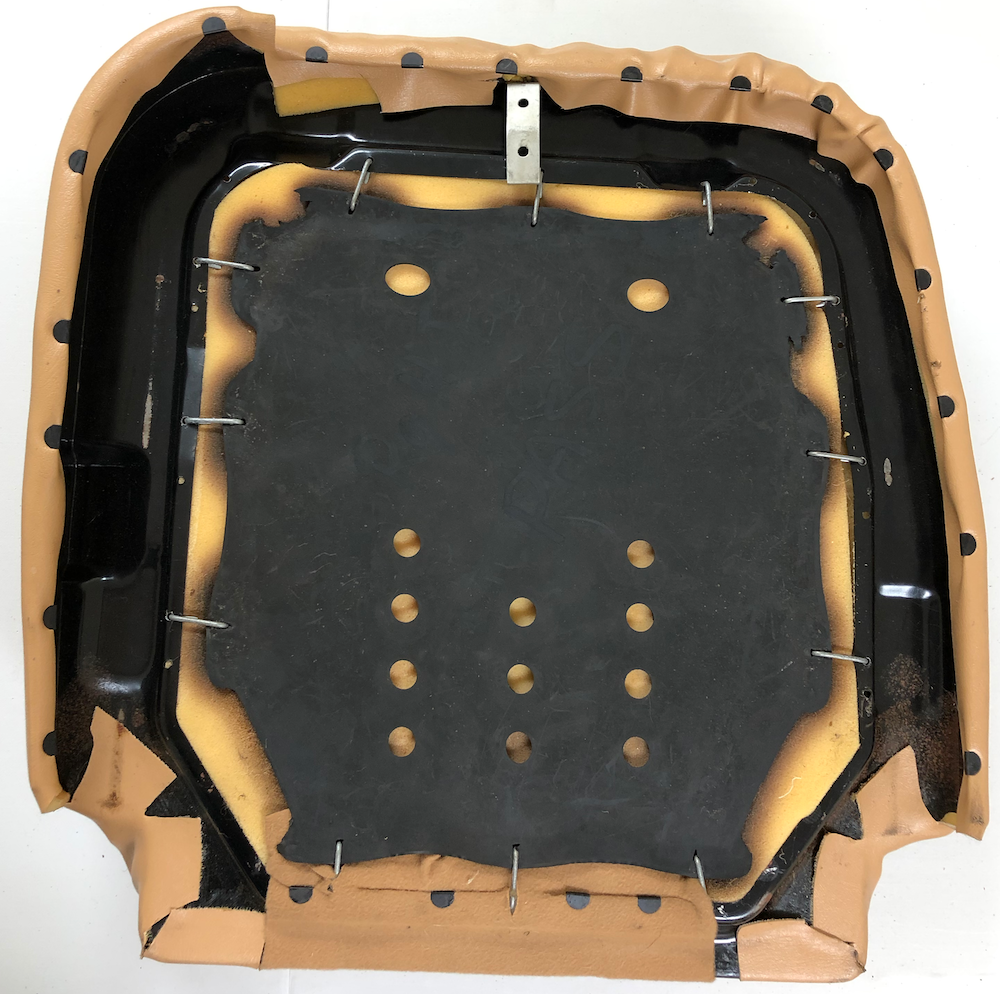






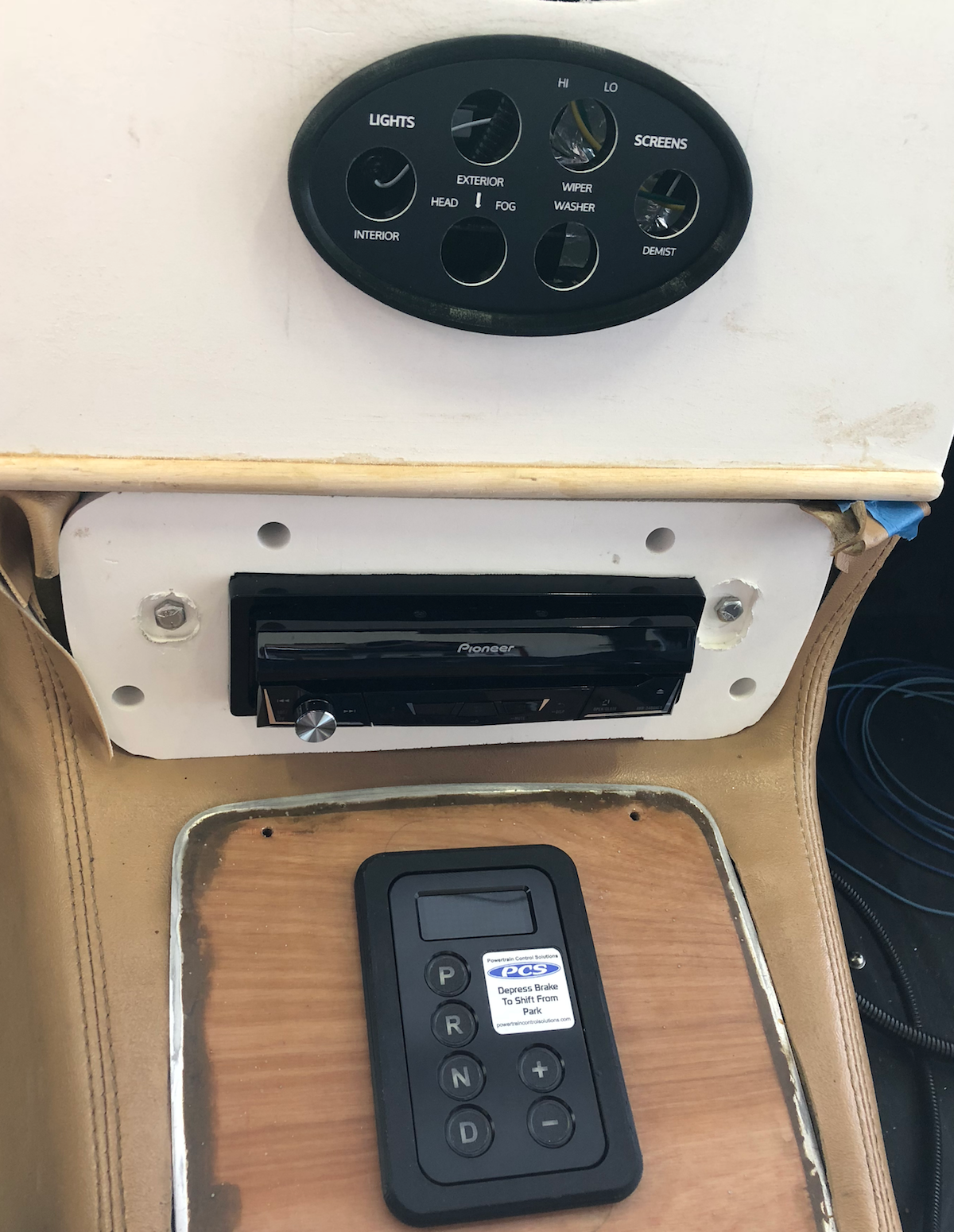

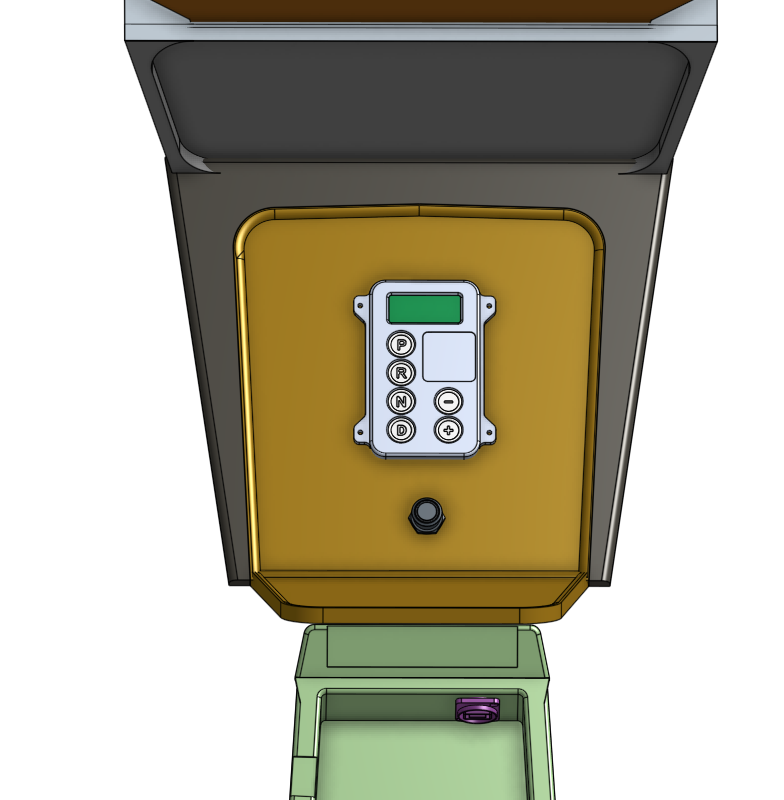
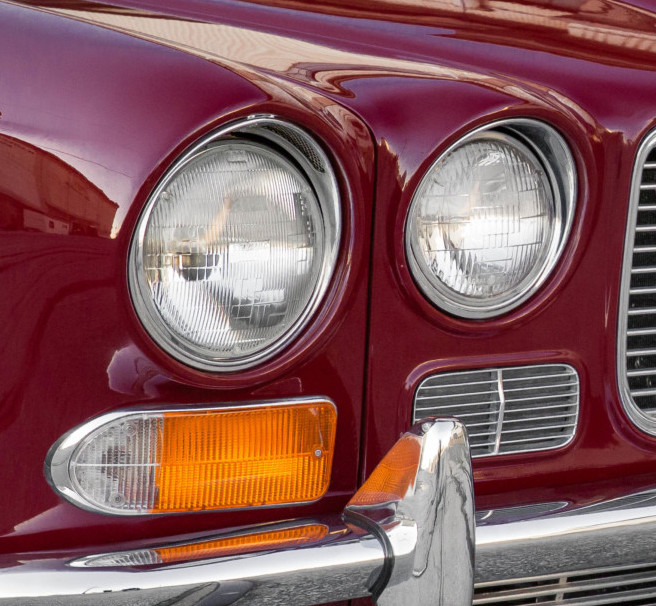

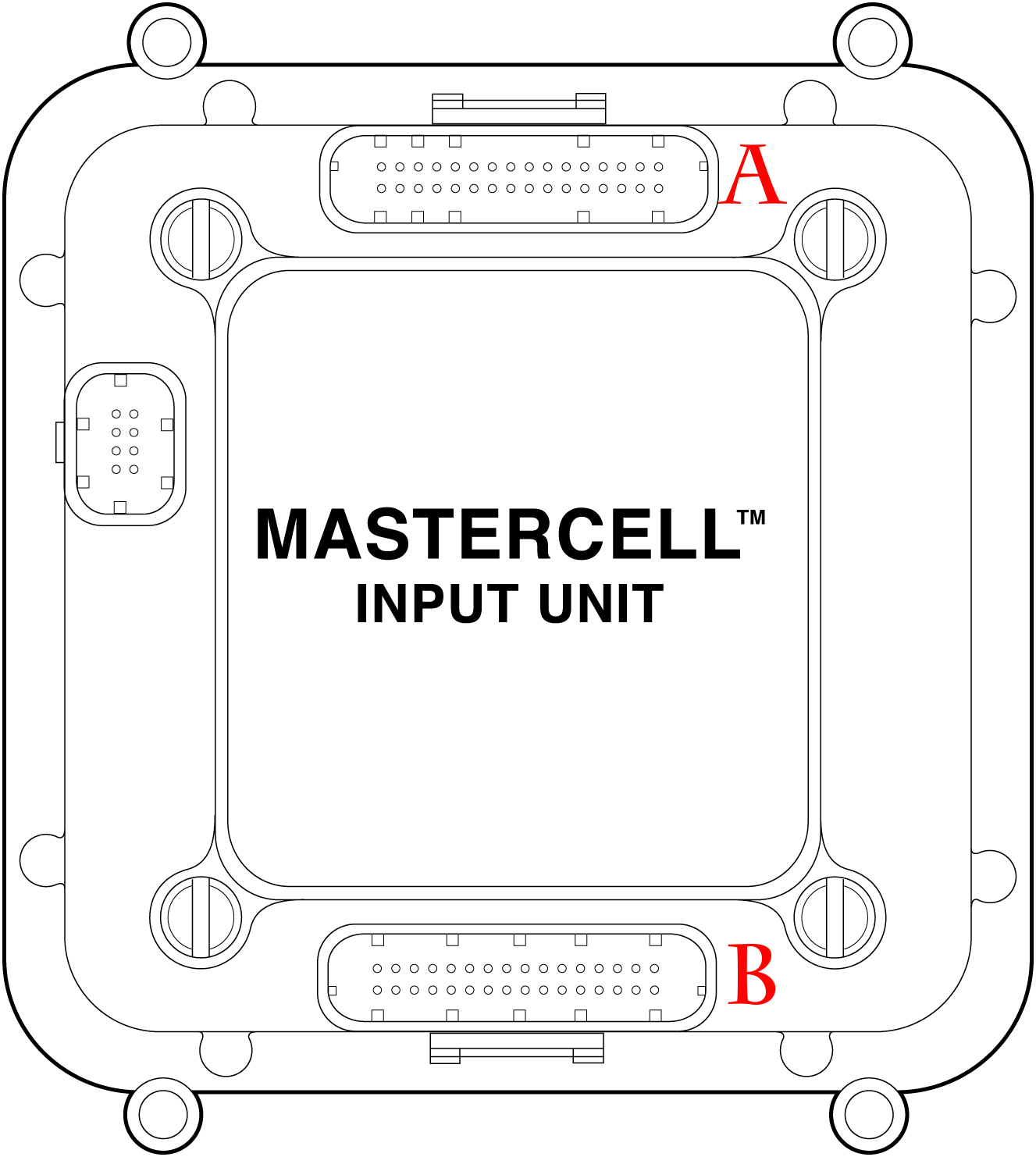





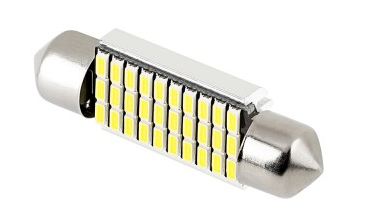
All these different types of restomod restorations (with more or less aesthetical success in my opinion) are now really great ways of improving the pleasure of daily driving (or almost)! I am starting the restoration of my MK2 3.4 of 1962 and wish to incorporate:
Hope the result will NOT be visible, or minimum, but really enjoyable !